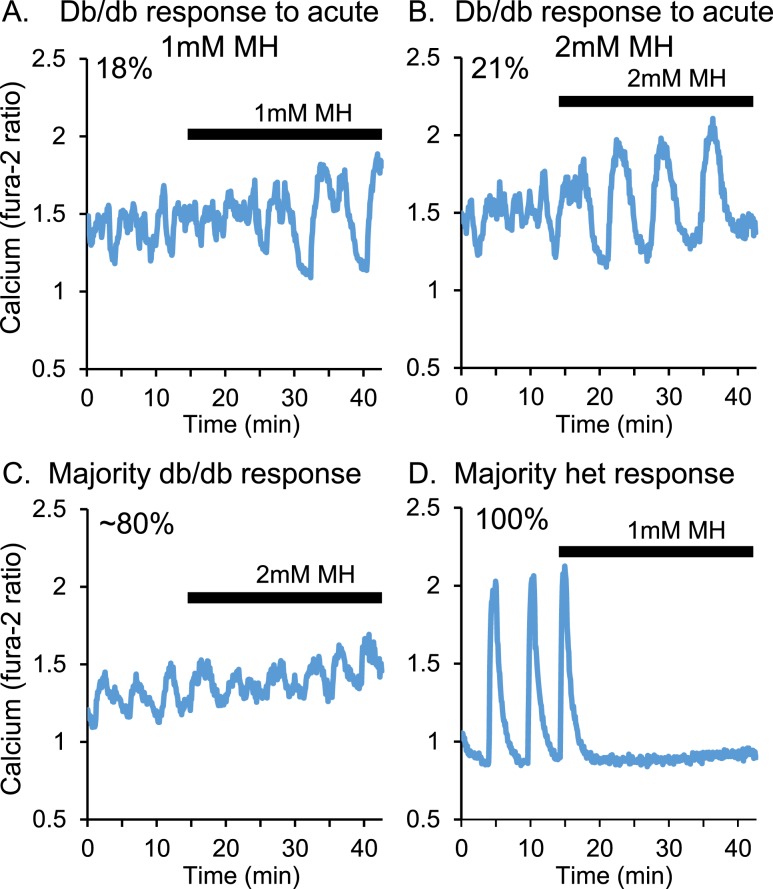Figure 3.
Overnight MH exposure does not substantially alter [Ca2+]i patterns. Islets from db/db mice were acutely exposed to (A) 1 mM or (B) 2 mM MH and recorded for changes in [Ca2+]i. In a minority of cases [(A) 18%; (B) 21%], short-term MH exposure was sufficient to induce larger amplitude oscillations. (C) In ~80% of cases [(A) 82%; (B) 79%], no change in [Ca2+]i patterns was observed. (D) For islets from heterozygous (het) controls, acute 1 mM MH was sufficient to inhibit calcium influx in 100% of cases.

